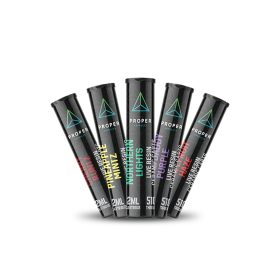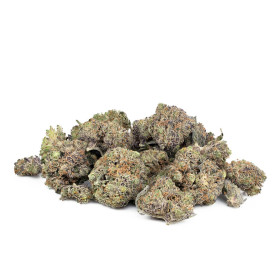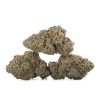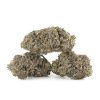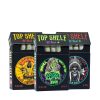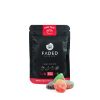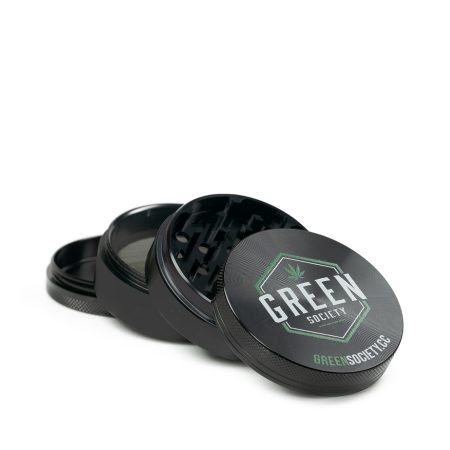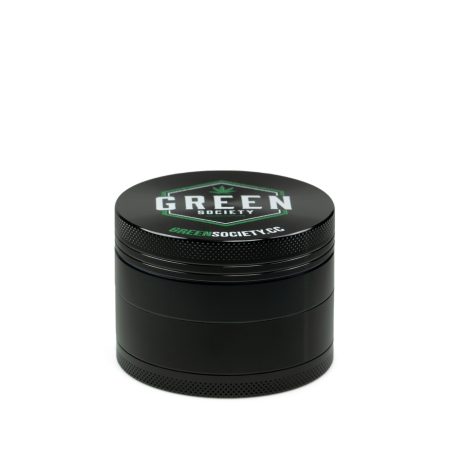Marijuana
How to Read THC Labels: A Guide for Canadian Buyers 2025
THC labels on cannabis products might look straightforward and easy to trust at first glance. Yet studies show nearly 44 percent of cannabis flower products have THC values that are off by more than 15 percent from what’s printed. Turns out, that little number you see on the label could be more confusing than helpful if you do not know what it actually means.
Table of Contents
- Understanding THC Labels On Cannabis Products
- Key Terms: TAC, CBD, And Other Cannabinoids
- How To Choose Products Based On THC Labels
- Common Mistakes When Reading THC Labels
Quick Summary
| Takeaway | Explanation |
|---|---|
| Understand Total THC Content | Check for ‘Total THC’ to gauge potency after heating. Review both mg per gram and percentage to make informed choices. |
| Pay Attention to Cannabinoid Ratios | Evaluate THC to CBD ratios to determine potential effects. Different ratios can influence experiences, especially for therapeutic use. |
| Check Dosage Recommendations | Look for serving sizes in milligrams per product. This helps prevent overconsumption, particularly with edibles where effects vary. |
| Beware of Labeling Inaccuracies | Be cautious as THC content may be misrepresented. Research shows many products have discrepancies beyond 15%, affecting your experience. |
| Recognize Minor Cannabinoids’ Role | Understand that cannabinoids like CBG and CBN contribute to effects. These compounds can enhance therapeutic outcomes through the ‘entourage effect.’ |
Understanding THC Labels on Cannabis Products
Deciphering THC labels is crucial for making informed cannabis purchases. Cannabis packaging contains a wealth of critical information that helps consumers understand product potency, composition, and recommended usage. Understanding these labels goes beyond simple curiosity it’s about ensuring safe and responsible consumption.
Decoding THC Content and Potency
THC content represents the primary psychoactive component in cannabis products. According to Ottawa Public Health, consumers must pay special attention to the ‘Total THC’ designation, which indicates the amount of THC available after heating. This activation process significantly impacts the product’s potential effects.
Labels typically display THC concentration in milligrams (mg) per gram or per package. A comprehensive label will show both the total THC content and the percentage of THC by weight. For instance, a product might list 20 mg THC per gram, which translates to a 2% THC concentration. This information helps consumers gauge the product’s potency and make educated decisions about consumption.
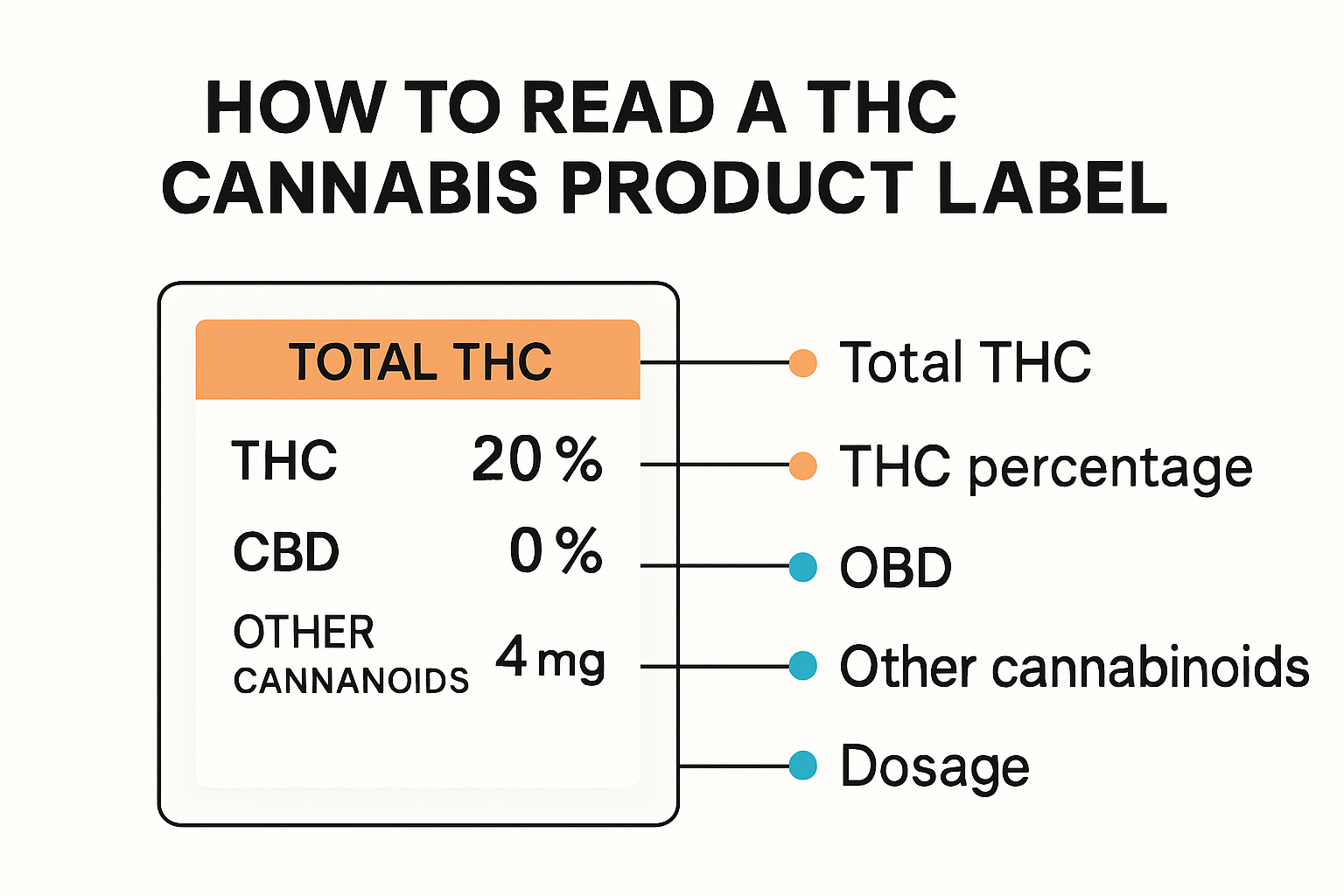
Interpreting Cannabinoid Profiles
Research from the University of Colorado Boulder highlights an important caveat: strain names and labels may not always reliably reflect the product’s exact chemical composition. This variability underscores the importance of carefully reading the full cannabinoid profile.
Beyond THC, labels often display other cannabinoid concentrations, particularly CBD, which can modulate THC’s effects. A comprehensive label might include ratios of THC to CBD, helping consumers understand the potential therapeutic or recreational experience. Some products feature balanced ratios designed for specific user preferences or medical needs.
Dosage and Serving Recommendations
A groundbreaking study published in 2020 revealed that clear dosage information dramatically improves consumer understanding. Labels that specify the number of doses per package can increase correct serving identification from just 7.4% to 54.1%.
Consumers should look for precise serving size recommendations, typically expressed in milligrams. Edible products, for example, will clearly state the THC content per serving and the total package THC content. This information is critical for managing intake and preventing overconsumption.
Navigating cannabis labels requires attention to detail and an understanding of the scientific information presented. By carefully reading and interpreting these labels, consumers can make more informed choices about their cannabis consumption, ensuring a safer and more predictable experience. Learn more about cannabis product selection to complement your understanding of THC labeling.

Key Terms: TAC, CBD, and Other Cannabinoids
Navigating the complex world of cannabis labeling requires understanding key terms and cannabinoid profiles. Beyond THC, cannabis products feature a range of compounds that contribute to their overall effects and potential therapeutic benefits.
Total Active Cannabinoids (TAC): A Comprehensive Overview
According to Health Canada, cannabis labels provide crucial information about cannabinoid content. Total Active Cannabinoids (TAC) represents the cumulative amount of active cannabinoids present in a product. This measurement goes beyond individual cannabinoid concentrations, offering a holistic view of the product’s potential effects.
TAC includes various cannabinoids like THC, CBD, CBG, and CBC. Each contributes unique properties to the overall cannabis experience. For consumers, understanding TAC helps evaluate a product’s potential potency and therapeutic potential. Some products might have a low THC percentage but a high TAC, indicating a diverse cannabinoid profile that could offer nuanced effects.
Here is a table summarizing the key cannabinoids found in TAC and their typical roles, as referenced in this section:
| Cannabinoid | Description | Typical Role/Effect |
|---|---|---|
| THC | Main psychoactive component | Produces intoxicating “high” |
| CBD | Non-psychoactive, often modulates effects of THC | May reduce anxiety, pain; balances THC effects |
| CBG | Minor cannabinoid, precursor to other cannabinoids | Potential anti-inflammatory, neuroprotective properties |
| CBC | Non-psychoactive, less common | Possible mood-elevating and anti-inflammatory effects |
| CBN | Mildly psychoactive, formed from aged THC | May have sedative effects |
Understanding CBD and Its Interactions
The Washington State Liquor and Cannabis Board emphasizes the importance of understanding CBD content. Cannabidiol (CBD) is a non psychoactive compound that can modulate THC’s effects. Unlike THC, CBD does not produce intoxicating effects but may offer potential therapeutic benefits.
Labels often display CBD content in milligrams or as a percentage. The ratio of THC to CBD becomes critical for consumers seeking specific experiences. A balanced ratio might provide pain relief or reduce anxiety without intense psychoactive effects. Some individuals prefer products with higher CBD content for potential wellness benefits.
Minor Cannabinoids and Their Significance
A clinical framework for evaluating cannabis product quality highlights the emerging importance of minor cannabinoids. While THC and CBD dominate discussions, compounds like CBG, CBC, and CBN offer unique potential.
Cannabinol (CBN), for instance, is associated with potential sedative effects. Cannabigerol (CBG) might offer anti inflammatory properties. These minor cannabinoids contribute to what researchers call the ‘entourage effect,’ where multiple compounds work synergistically to produce more comprehensive effects.
Consumers should recognize that cannabinoid profiles vary widely between products. Explore our comprehensive guide to cannabis compounds to deepen your understanding of these fascinating molecules. By carefully examining labels and understanding these terms, you can make more informed choices about your cannabis consumption, selecting products that align with your specific needs and preferences.
How to Choose Products Based on THC Labels
Selecting the right cannabis product requires more than a casual glance at THC percentages. Understanding how to interpret labels critically can help consumers make informed decisions that align with their specific needs and preferences.
Matching THC Content to Personal Tolerance
Research from the University of Colorado Boulder reveals a critical consideration: cannabis product labels may not always accurately represent THC content. Nearly half of cannabis flower products had mislabeled THC percentages, often overstating their potency. This underscores the importance of starting with lower THC concentrations and gradually understanding your personal tolerance.
Beginners should look for products with lower THC percentages, typically between 10-15%. Experienced users might opt for higher concentrations. Consider your consumption method, as inhaled cannabis affects the body differently compared to edibles. Pay attention to the total THC content per serving, not just the overall package concentration.
Below is a table to help compare recommended THC content for different user experience levels, as outlined in this section:
| User Experience Level | Recommended THC Percentage | Notes |
|---|---|---|
| Beginner | 10-15% | Start low; assess personal tolerance |
| Experienced | Above 15% | Higher potency for accustomed users |
| All users | Check per-serving content | Especially important for edibles |
Considering Cannabinoid Ratios and Effects
The Washington State Liquor and Cannabis Board emphasizes the significance of understanding comprehensive cannabinoid profiles. THC percentage is just one piece of the puzzle. The ratio between THC and CBD, along with the presence of minor cannabinoids, dramatically influences the product’s potential effects.
Look for labels that provide detailed cannabinoid information. Products with balanced THC:CBD ratios might offer more nuanced experiences. For instance, a 1:1 ratio could provide therapeutic benefits with reduced psychoactive intensity. Those seeking specific outcomes like relaxation, pain relief, or energy should carefully examine these detailed cannabinoid compositions.
Interpreting Labeling for Informed Choices
Research on cannabis labeling comprehension indicates that consumers often struggle with quantitative information. Labels that include interpretive descriptors, symbols, or serving references can significantly improve decision making. Look for additional context beyond raw numbers that helps you understand the product’s potential effects.
Pay attention to serving size recommendations, potential onset times, and duration of effects. Some labels include icons or color coding to indicate expected experiences mild, moderate, or intense. Terpene profiles can also provide insights into potential flavor and effect characteristics.
Navigating cannabis labels requires a combination of scientific understanding and personal awareness. Check out our comprehensive guide to cannabis selection to further refine your approach. Remember that individual responses to cannabis can vary, so start low and go slow when exploring new products. Careful label reading is your first step toward a safe and enjoyable cannabis experience.
Common Mistakes When Reading THC Labels
Navigating cannabis product labels can be challenging, with many consumers making critical errors that impact their purchasing and consumption decisions. Understanding these common pitfalls is essential for responsible and informed cannabis use.
Misinterpreting THC Percentages
A comprehensive study revealed a startling statistic: only 13.4% of participants could correctly determine a recommended serving size when THC content was displayed in milligrams. This highlights the widespread confusion surrounding quantitative THC information.
Consumers often make the mistake of assuming higher THC percentages automatically translate to a better experience. In reality, THC content is just one factor in a product’s overall effect. Some individuals mistakenly select products with the highest THC percentage, overlooking important aspects like cannabinoid ratios, terpene profiles, and personal tolerance levels. This approach can lead to overwhelming or unpleasant experiences, especially for those new to cannabis consumption.
Overlooking Labeling Inaccuracies
Research from the University of Colorado Boulder uncovered a significant concern: approximately 44% of cannabis flower products had THC content discrepancies exceeding 15% from their labeled values. This revelation underscores the critical importance of not taking labels at face value.
Many consumers mistakenly believe that cannabis labels are 100% accurate. They fail to consider potential variations in testing methods, production processes, and laboratory standards. Some common oversights include not checking the testing date, ignoring batch-specific variations, and assuming consistency across different products from the same brand. This blind trust can lead to unexpected experiences and potential disappointment.
Neglecting Comprehensive Label Information
The Washington State Liquor and Cannabis Board emphasizes the importance of understanding comprehensive label information beyond simple THC percentages. Consumers frequently make the mistake of focusing solely on THC content while overlooking critical details like total cannabinoid content, terpene profiles, and serving recommendations.
Key mistakes include ignoring CBD content, which can modulate THC’s effects, and overlooking serving size recommendations. Some consumers fail to understand the difference between total package THC and per-serving THC content. This can lead to accidental overconsumption, particularly with edible products where onset and duration differ significantly from inhaled cannabis.
Navigating cannabis labels requires careful attention and a willingness to learn. Explore our detailed guide to cannabis product understanding to avoid these common pitfalls. By developing a more nuanced approach to reading labels, you can make more informed decisions, ensure a safer consumption experience, and maximize the potential benefits of cannabis products.
Frequently Asked Questions
What does ‘Total THC’ mean on cannabis labels?
‘Total THC’ indicates the amount of THC available in a product after it’s been heated. This is important for understanding the potency and potential effects of the cannabis product.
How can I determine my personal tolerance when choosing THC products?
Start with lower THC percentages (10-15%) if you are new to cannabis. Gradually increase the concentration as you learn how your body reacts to different levels of THC.
Why is it important to check both THC percentage and milligrams on the label?
The THC percentage shows the concentration by weight, while milligrams indicate the actual amount of THC per gram or package. Both metrics help you gauge the potency and appropriate dosing for your needs.
What should I look for in the cannabinoid profile beside THC?
In addition to THC, check for CBD content and other minor cannabinoids like CBG and CBN. These can influence the overall effects and therapeutic benefits of the product, particularly in relation to the entourage effect.
Shop Smarter: Get Precisely Labeled Cannabis You Can Trust
If the confusion around THC labels or inaccurate potency claims leaves you frustrated or worried about choosing the right product, you are not alone. This guide highlights real pain points like misinterpreted THC percentages, inconsistent labelling, and uncertainty about serving sizes or cannabinoid profiles. At GreenSociety.cc, we recognize how stressful it is to feel unsure about cannabis labels, especially if you value safety, quality, and predictable results. We make it easy to find reliable cannabis products by providing clear, detailed descriptions and trusted lab information, so you can shop with more confidence and enjoy results that match your expectations.
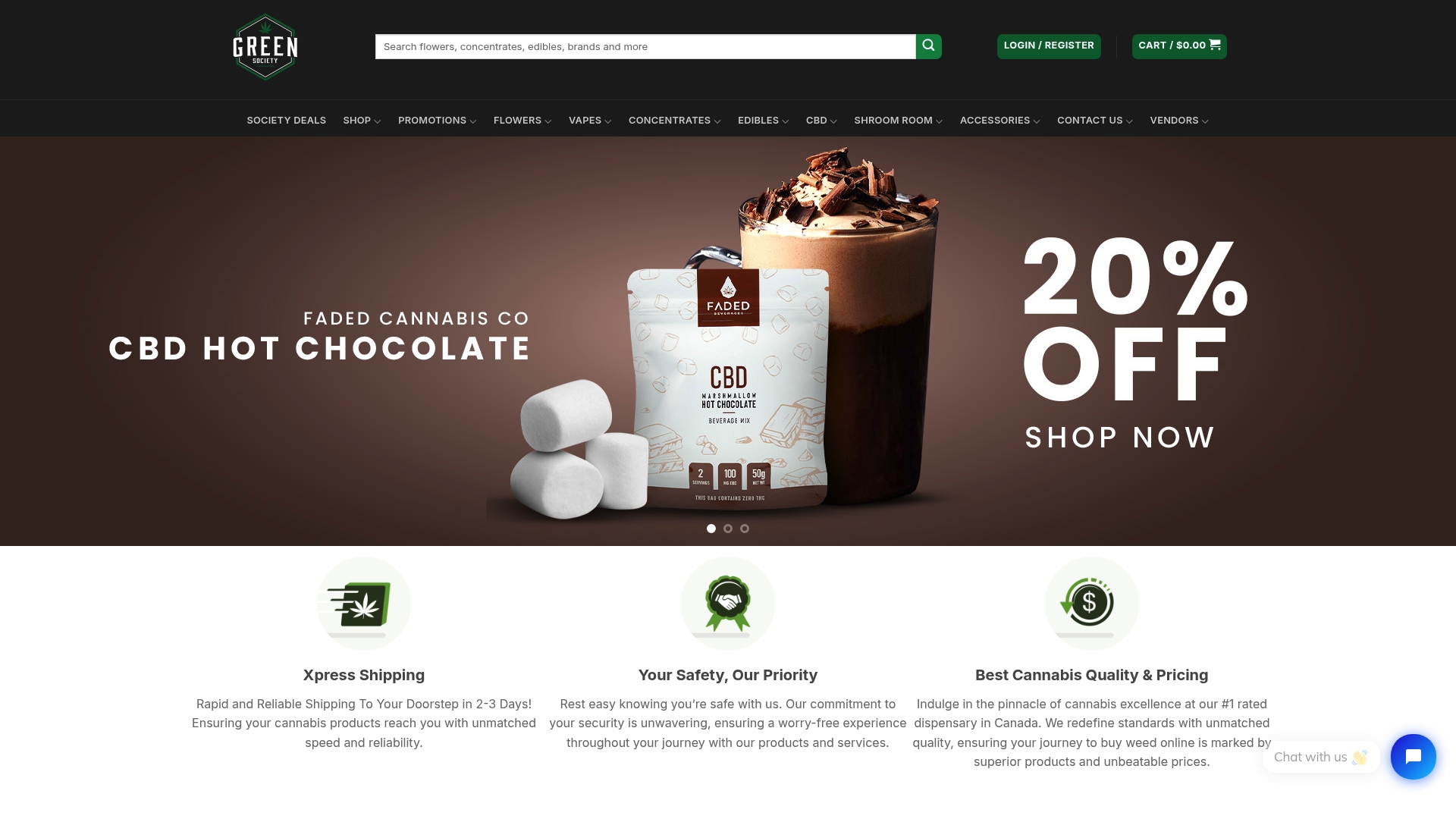
Ready to put your knowledge into action? Visit GreenSociety.cc now and browse our curated selection, featuring premium flowers, carefully dosed edibles, and expertly crafted concentrates. Take control of your cannabis experience by choosing products with transparent information. If you need help, check out our helpful FAQs and guides. Start shopping today for the most accurate labels and the safest choices available online.
Recommended
- How To Order ~ Green Society
- Ganja Edibles THC Brownies | Buy Edibles Online | Green Society
- Mary’s Sativa Bunnies (Triple Strength) | Buy Edibles Online | Green Society
- Live Resin – Krazy Glue | Buy Concentrates Online | Green Society



